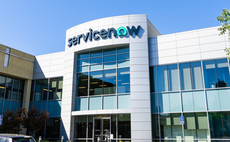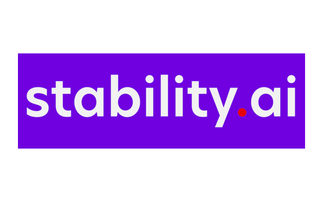
The hybrid office is here to stay
As a year defined by change and uncertainty comes to a close, it seems a mammoth task to predict what next year holds in store. Because of this uncertainty, it is vital for businesses to prepare for the challenges and hurdles ahead.
The three key areas for IT next year will be: supporting hybrid collaboration, figuring out how to blend legacy and new technologies together, and finally, leaning on AI and automation to improve productivity. And of course, this all sits within the context of the economic downturn and tighter budgets.
Economic climate
Across the industry, we've seen the impact of the economic downturn, with our own commissioned research into the realities and struggles of 350 IT leaders across the UK and US highlighting the challenges they face.
We found that companies are having to pull back on new investments or deal with decreased budgets for the next year.
In fact, one-third of UK IT leaders have been forced to deprioritize or cancel tech projects whilst 65% said they either planned to, or already had, decreased their IT budget as a result of the economic downturn.
The question is: what does that mean? How can companies do more with what they already have?
Many are looking at gluing together the tools they already have, whilst others are looking to automation and AI to increase the efficiency and agility of their organisation.
AI is moving from novelty to reality in the workplace
We recently took a pulse check of mid-senior management workers within large enterprises to find out what they really think of AI in the workplace. We found that almost two-thirds of UK respondents (61%) wanted to use AI at work as they recognised its many benefits, with over half (53%) saying that AI will save them time.
However, 41% felt that their business lacked the skills required to implement and use AI at this time. As we head into 2023, these skill shortages must be overcome in order to adopt AI solutions that can provide genuine benefit to business users.
Similarly, issues with AI, such as bias, must also be addressed. Whilst AI bias will remain an issue, many are working to remove it from training sets. As bias can create negative social impact, it is vital to work backwards through data to learn what biases are being unintentionally created and how to remove them.
Hybrid working and the future of collaboration
Looking ahead to the office of 2023, it is clear that the hybrid model is here to stay. Businesses and employees have moved towards a federated structure that no longer has a central location where employees can meet with their colleagues and customers.
For example, even if you visit a customer at their office, there will always need to be a video call option for customers not on-site. This fundamentally changes how we engage with each other.
As a result of this digital migration, there is an increasing focus on remote collaboration as a part of all business technology - with companies requesting that their engineering tools include or fully support collaborative work, whether on-site or remote.
This isn't going to go away as a need. Tools that don't address this will become redundant.
From collaborative document editing to collaborative design and collaborative coding, there is an increased focus on technology that supports collaboration - and the employee user experience.
The changing definition of hybrid IT
From hybrid working to hybrid IT - one trend we have been seeing with enterprises is a difference in the way that hybrid IT models are being defined and implemented.
Businesses don't want to just ‘rip and replace', but rather utilise existing long-term investments alongside new investments and new technology. As a result, ‘hybrid' no longer just means between on-premise and the cloud, but also between legacy and modern technology.
2023 is about a more pragmatic approach - working with what you already have and getting more value from it. This attitude shift from ‘throwing away old junk' to looking at how legacy tech can continue to deliver value is where APIs can play a vital role, by ensuring legacy assets can continue to deliver value, at scale, in a modern architecture. Only then can replacements and updates be done at a lower cost and with lower risk.
Think of this like home renovation, in the sense that for the most part changes and upgrades here and there can be enough to improve things without having to replace everything. It's a continuing effort through time where bits and pieces get upgraded as and when they are needed.
In a similar sense ‘renovation' of the IT estate never stops, but the priorities and size of projects ebb and flow. The key is to develop the skills necessary as well as a mindset of continuous refactoring and improvement to harmonise old and new.
This more pragmatic and cost-effective approach will only become more important in the coming year.
Innovation despite uncertainty
Improving efficiency and productivity will be the twin goals for IT next year. The economy may be creating a great deal of uncertainty in the business world, but one thing it won't do is silence the march of innovation, with AI and collaborative technology set to make further strides in 2023.
This post was sponsored by SnapLogic




















